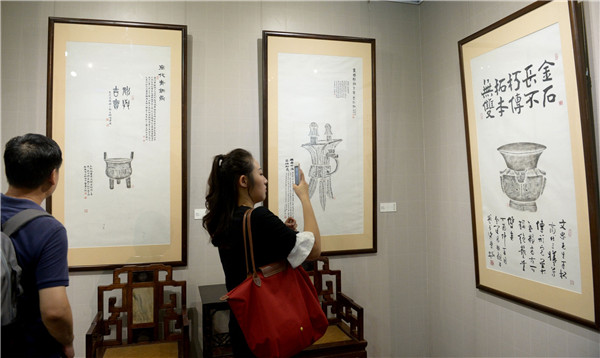 |
|
Jia's rubbings demonstrate a technique which was very popular before photography was introduced in China. [Photo provided to China Daily] |
An ongoing exhibition shines light on whole-shape rubbings, a technique which creates a three-dimensional effect to show an item's shape and details on it. Liu Xiangrui reports.
More than 60 rubbings of ancient bronze ware and other relics by Jia Wenzhong, an expert on bronze ware identification and relic repairs, are on display at Prince Kung's Mansion in Beijing.
Unlike regular rubbings that only represent the surface of relics from one side, the rubbings by Jia are whole-shape rubbings, a technique that was developed nearly 200 years ago, which creates a three-dimensional effect to show an item's shape and details on its surface.
The technique used to be very popular before photography was introduced into China and was used in epigraphy, the study of inscriptions.
"For people back then who were interested in epigraphy, they usually studied the relics through paintings and rubbings. Rubbings were much more accurate than paintings, so some experts believe that without rubbings there would be no epigraphy," says Jia.
The traditional technique is still widely used and plays an important part in archaeology, the 56-year-old adds. Jia was born into a family in Beijing that for generations was devoted to repairing cultural artifacts, especially bronze ware, and he mastered the skills to create whole shape rubbings during his long relic repair career.
Among the pieces on display in the exhibition are rubbings of famous bronze pieces such as the Boju Ge, an ancient three-legged bronze vessel used for sacrifices that was unearthed in Beijing in 1974, but which dates back to the Western Zhou Dynasty (c.11th century-771 BC).
The Boju Ge rubbing, which is regarded as one of Jia's representational works, was given to former French president Jacques Chirac as a present by China in 2011.